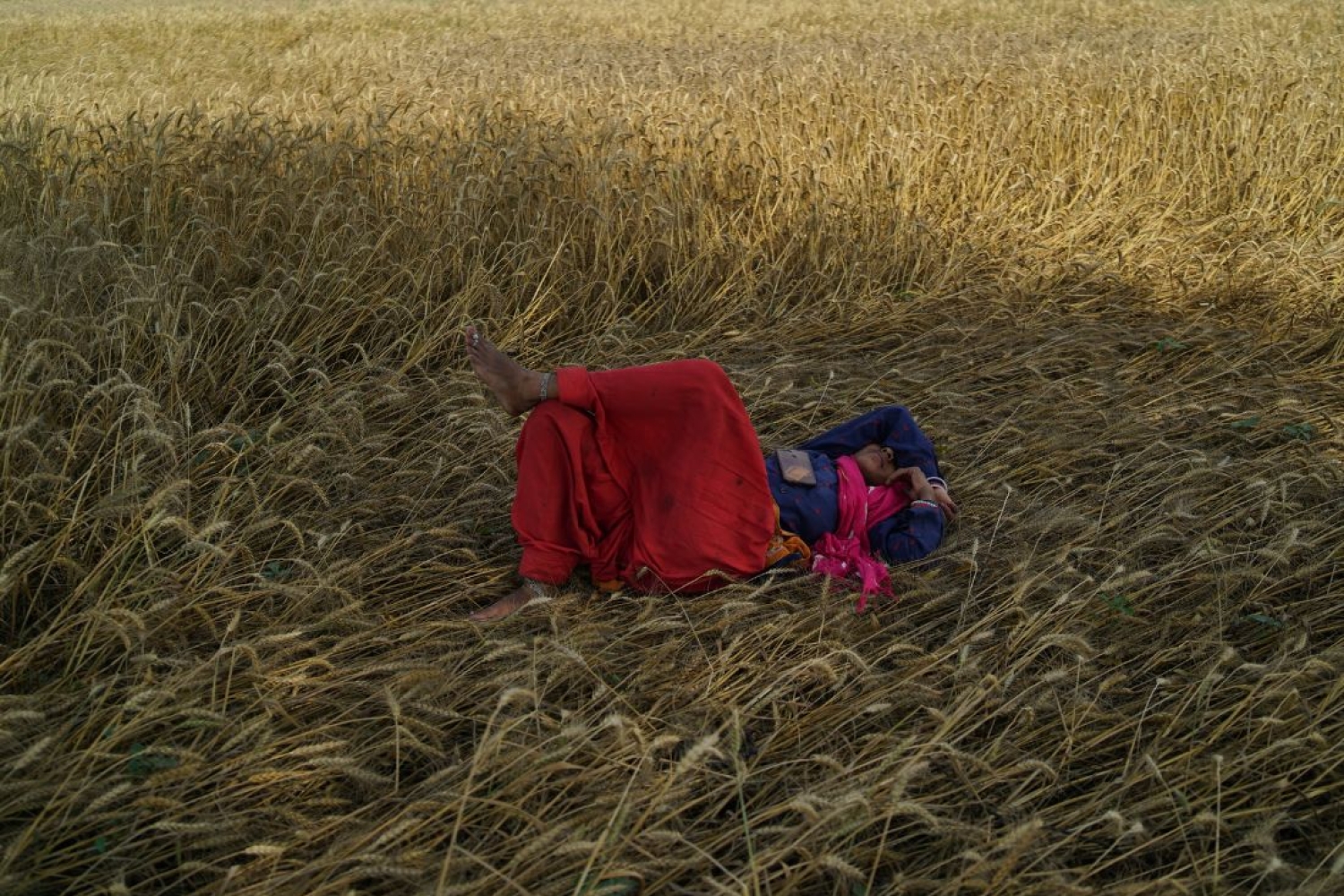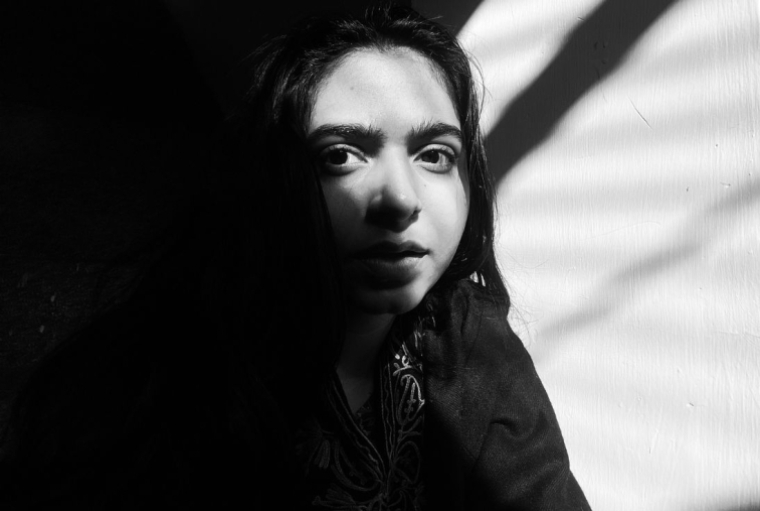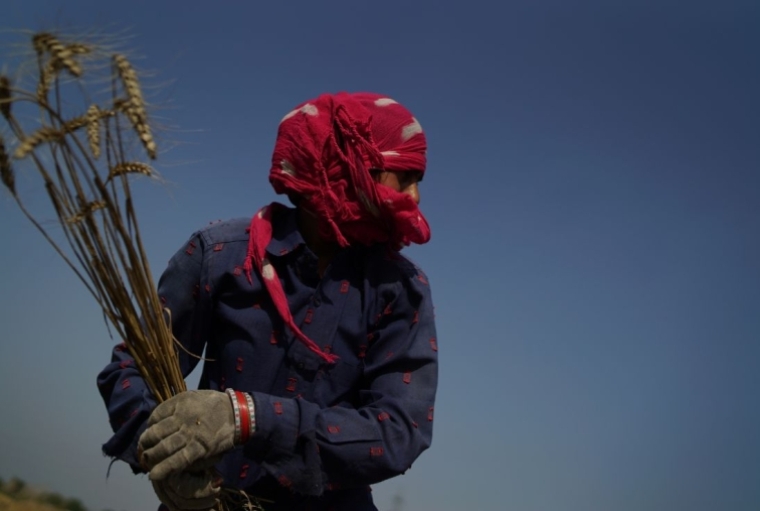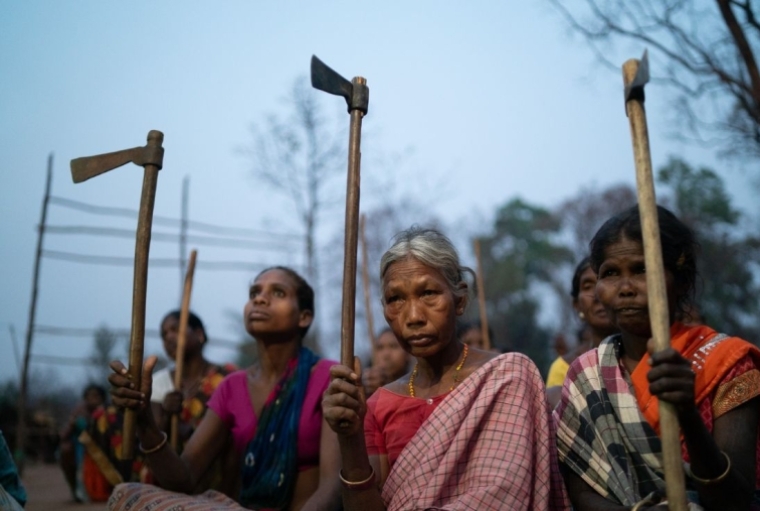

One of the driving forces behind award-winning photographer and filmmaker Bhumika Saraswati’s photographs is a sense of urgency to document lives and narratives that are often overlooked or erased. With climate crisis unfolding daily in our lives and rapid changes occurring in the landscapes, she focuses on telling the visual stories of unequal affects of heat that are impacting the marginalised communities in India. As she presents her work at the ongoing Chennai Photo Biennale, she shares the vision, the rage, the giggles and everything behind her lens.
Transcending the Limits of Language
As a writer, Bhumika always wanted her journalistic stories to be accessible to everyone, including her mother, nani and her Dalit community. Soon, she realised that visuals have the potential to transcend the limits of language. From a very young age, visuals and films have also build the person she is today so she started to explore the medium even further.

Bhumika Saraswati
The Beginnings of Unequal Heat Project
The unequal heat project was born three years ago out of her disappointment with the way heat and climate crises were being reported in the media. As a journalist, she attended numerous climate conferences and read countless articles, but was struck by how the stories reduced heat-related deaths to mere statistics, without focusing on the individuals behind the numbers. ‘Who are these people really? These are clearly not you and me,’ she reflects. ‘Somehow, we've reduced these people to numbers because of the existing social structures and status quo.’ She emphasis that the death toll from heat is especially tragic because it’s entirely preventable, yet it continues to claim lives every season.

Forms of Resilience
Her project also highlights the intersection of caste and gender when it comes to the unequal effects of heat. ‘I see a lot of agricultural farms, and I only see women working on farms but we always imagine a man to be a farmer probably because he owns the land but when you really go on the ground, you see only women working.’ The image of a female farmer is underrepresented in the narratives of farmers, which she sought to bring forth through her project. She aimed to cover the lives of women in fields who are finding ways to deal with the climate crisis due to lack of support. ‘There is one photo where a woman is wearing winter gloves in 50 degree celsius temperature so that they are protected from the husk of the wheat farm.’ Bhumika wanted to present the resilience existing in the ground realities to get rid of the dehumanising imagery present in reports. ‘These are communities who have found their own ways to be resilient and you have to photograph them as holistically as possible. They're as flawed as you and I are. They're as lovers as you and I are.’ She captured women lying on the ground under the tree’s shade at leisure crafting Instagram reels, living normative aspects of life, as forms of resilience.
Bhumika built an archive of more than 2000 photos with frequent travel to different parts of the country and brought to life various emotions and forms of protest. ‘I feel like each of these photos are important because I want to capture every individual, every woman who tried to protect our environment and with not normative images of protest. Why can't two women giggling be a sign of protest in the middle of all this crisis. The amount of hard work we do just to protect not just our own land, but our collective future is something beyond comprehension.’

Heat as Rage
She also looks at heat not just as rising temperature but the rage that has been simmered through generations of subjugation. Dalit and Adivasi women, who endure the subjugation of being deemed 'untouchable,' bear the intersection of systemic violence along with climate crisis. ‘While I was doing this project, I was also listening to other sexual violence stories within these fields. This idea of unequal heat is not just physical but it's also the rage with which some of us have been living, because of the caste system and patriarchy that has existed for such a long time.’
Over the years, she also covered the rage of protests against deforestation. ‘I was invited by other communities to photograph, for example, in Chattisgarh, where a lot of women are protesting to save their land [from deforestation]. It was directly related to heat, because cutting off these forests is leading to rising temperatures and ruining the river—this rage needs to be documented.’ The urgency of documentation also comes from the need to document people who are putting their lives at risk to protect forests. ‘The speed with which we're killing our environment I fear that next time when I go to that same hill, I might not see that hill at all. The least I can do is photograph each and every individual who are protesting to save them as an archive.’

Exhibiting at the Chennai Photo Biennale
Exhibiting only twelve photos at the biennale, she is proud to occupy a space at the exhibition, where her images are presented in large formats for people to witness, making her stories more accessible. 'At least a photo has been able to occupy the space we're otherwise denied. In spaces like these people from a certain caste and class background might not be able to attend but even if I sensitize one person, it is good for me. I am doing that labor and you are doing that labor of listening to this uncomfortable conversation, so that we can make it accessible to more people and that's the outcome of places like this, I feel. To be able to at least make some space for this dialogue.’
Words Paridhi Badgotri
Date 27.01.2025